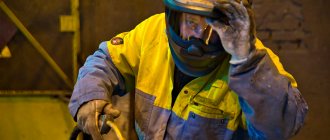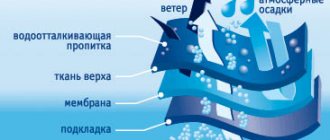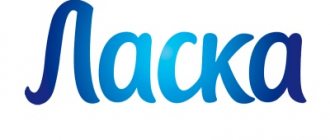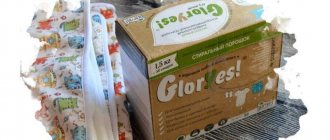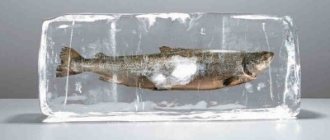The employer, at its own expense, is obliged to provide employees with special clothing and, in accordance with Art. 221 of the Labor Code of the Russian Federation and order of the Ministry of Health and Social Development of Russia dated 06/01/2009 N 290n (as amended on 01/12/2015) “On approval of inter-industry rules for providing workers with special clothing, special footwear and other personal protective equipment”, organize washing, drying and repairs. In the article we will tell you which regulatory documents determine the rules for washing workwear, how washing is organized, and the features of caring for PPE.
General information
General intersectoral rules for washing workwear are given in the third section of Order of the Ministry of Health and Social Development of Russia dated June 1, 2009 N 290n. There is no single document that would contain requirements for all types of workwear, so companies are guided by regulatory documents developed for each industry separately.
According to clause 27 of Order No. 290n of the Ministry of Health and Social Development of Russia dated June 1, 2009, an employee does not have the right to take PPE outside the employer’s territory, which means that staff are prohibited from washing protective clothing at home; this must be organized by the employer.
The document establishing the frequency of washing workwear (clause 7.14 of the Intersectoral Rules approved by Resolution of the Ministry of Labor of the Russian Federation of June 17, 2003 No. 36) has become invalid. For some industries, regulatory documents indicate periods for washing PPE, but not for all. Therefore, many companies independently approve the washing schedule in the local regulations on the issuance of workwear or by a separate order. Based on the specifics of using PPE in industries where there is no heavy pollution, washing is organized, for example, once a week; in other enterprises, workwear must be washed every three days. Employees must notify their employer of the additional need to wash and repair work clothing.
Rules and recommendations
During operation, workers' clothing must withstand at least 20 washes. To extend the service life, it is necessary to follow washing rules regarding temperature and choice of cleaning agent.
There are no uniform requirements for washing workwear. Features of cleaning depend on the material, its quality, period of wear, and the specifics of the organization or production.
Treatment methods are selected depending on the type of contamination and type of fabric.
For example, woolen items are washed at low temperatures and at low drum speeds. Oil workers' clothing must be pre-ventilated for two hours. After this, the overalls are soaked in a soapy solution.
If washing standards are not followed, clothes will quickly become unusable and lose strength, elasticity, and protective properties. Therefore, cleaning of workwear is carried out in accordance with the icons on the tag.
How is washing organized?
Two ways to wash workwear:
- at the enterprise (the employer purchases washing machines and dryers, entrusts washing and repairs to dedicated employees);
- if the employer does not have the technical capabilities to create a laundry on the organization’s territory, third-party companies are involved in this work.
Streamlining the washing process should be regulated by local regulations of the organization. It is necessary to provide for the procedure for handing over workwear, for example, individually by each employee or centrally from one department; who is responsible for delivery and acceptance of work kits; where contaminated overalls will be stored, and where clean ones, etc.
A civil contract is concluded with third-party organizations. When choosing a laundry, you should pay attention to the availability of specialized equipment that removes persistent industrial stains. As mentioned earlier, the employee does not have the right to take protective clothing outside the employer’s territory, therefore the process of delivery and return of personal protective equipment must be specified in the contract.
Laundry schedule and other organizational documents
From the above regulatory documents it is clear that there are currently no specific terms for washing workwear in the legislative and regulatory framework. At the same time, the employer is obliged to do the laundry.
A workwear washing schedule will help resolve the issue of the frequency of washing PPE in an organization. It is part of the LNA - “Regulations on the issuance of PPE”, approved by the order of the organization. Taking into account the peculiarities of using special sets of clothes, the organization develops its own washing schedule. Typically it contains:
- names of departments;
- Full name of the responsible persons;
- time of delivery (week in order in the month and day of the week);
- information about handing over the laundry (signatures of the handing over person, the receiving person, number of sets);
- information about the return from washing (signatures of the handing over and receiving persons, date, number of sets).
Usually this schedule also includes a block on the repair of personal protective equipment. It is formatted similarly. To record the handing over of workwear by workers for washing and return to production, a special statement is used (methodological instructions, approved by the Ministry of Finance 135n dated 12/26/02, paragraph 66). It is signed by the person financially responsible for PPE.
IMPORTANT! Reference information on the standards for the free issuance of workwear, safety footwear and other PPE from ConsultantPlus is available at the link
If clothes are washed during the work week and not on the weekend, workers must be provided with replacement sets.
Documents confirming compliance with legal requirements must be carefully stored. Rospotrebnadzor, at the time of a scheduled or unscheduled inspection, has the right to demand any of them, as stated, in particular, on the official website of the Department. At the same time, the organization should not receive special permission from Rospotrebnadzor for its activities of washing employees’ workwear.
On a note! An employee’s refusal to hand over protective clothing for washing is not a basis for releasing the employer from the obligation to provide washing of PPE (Letter of the Ministry of Labor dated 5/06/18, review of current issues for the period 01/05/18-31/05/18).
Briefly
- The requirements of Rospotrebnadzor regarding the organization of washing workwear at an enterprise are based on a number of legislative acts and norms of both a federal and industry nature. Based on any of them, Rospotrebnadzor can conduct an inspection and identify violations, so washing workwear requires a serious approach and control.
- Washing of workwear is carried out either on site or by concluding a GPC agreement with a third-party laundry.
- There are no specific terms in the legislation regarding the frequency with which washing should be done. They are established by the LNA, the Regulations on PPE, approved by order of the organization.
- A schedule for washing special sets of clothing is required: by department, date, person responsible for receiving and handing over items. Reception and issuance of PPE to employees is carried out according to a list.
- The employer is required to keep all documents. They confirm compliance with the rules for washing workwear. A Rospotrebnadzor official has the right to demand any document during an inspection.
Features of care for workwear
The main methods for cleaning workwear from contaminants:
- washing (washing with water, mechanical action and detergents);
- dry cleaning (removing dirt and stains using solvents);
- aqua-cleaning (a gentle technology for processing products in a small amount of water using special cleaning agents).
When choosing a method, it is necessary to take into account the type of workwear, the fabric from which the work kit is made, as well as the nature of the contamination. It is necessary to remember the care rules that are indicated on the internal tags of the workwear.
Most regular laundry detergents are not suitable for professional PPE care. Special highly concentrated preparations are used to wash work clothes. They contain nonionic and amphoteric surfactants, alkaline and other additives that increase the cleaning ability of the preparations.
The product CHIMITEK STIRAL-PROFI is suitable for removing complex oil, fat and industrial stains from work clothes. To remove household, oil and fat, pigment stains on items made of white and colored fabrics – CHIMITEK WASHING-WHITE. The product not only removes dirt, but also refreshes the color of the product.
Both products do not contain hydrocarbon solvents, are used for washing workwear made of cotton, blended and synthetic fabrics, and are easy to rinse without leaving detergent components on the fabric. During the washing process, stains that have penetrated deep into the structure of the fabric are removed.
General requirements for washing workwear
Typically, organizations take into account Order No. 290n, to which Section No. 3 is devoted to washing uniforms. Under special working conditions, similar industry-specific, special documents are used.
The washing rules themselves are described in SanPiN. For example, order No. 141 dated 06/11/03 of the chief sanitary doctor puts into effect several Sanitary Regulations and Regulations working in industry, agriculture, communications, and construction. Section 9 of this is devoted to the maintenance of work clothes, and if there are radioactive substances at the enterprise, then they are guided by SanPiN 2.2.8.46-03 (decontamination of work clothes).
conclusions
- Requirements for organizing the washing of workwear are based on a number of regulatory documents, including those of an industry nature.
- Washing of workwear is organized at the expense of the employer on the territory of the enterprise or performed by a third party.
- The washing process at the enterprise must be regulated by local regulations, and a civil contract is concluded with third-party laundries.
- When choosing a washing method and detergents, it is necessary to take into account the rules for caring for workwear, as well as the type of contamination.
- Proper care of workwear extends its service life and increases the degree of protection for workers.
Washing special clothes
Both summer and winter workwear should be washed regularly. The frequency of washing is specified in the Interindustry Rules for Occupational Safety and Health. So, for example, the washing schedule for workers of public water supply and sewerage services is as follows:
- Once every 6 days – in case of heavy contamination.
- Once every 10 days - with moderate pollution.
Washing standards must correspond to the level of contamination
In any case, how often work clothes will be washed should be specified in a local act (order). And since you have to wash overalls regularly, you should strictly follow certain rules. Let's look at them.
Features of washing workwear made from different fabrics
To ensure that the technical characteristics of the fabric do not change, and that the suits retain their presentable appearance and serve for a long time, it is necessary to wash them under certain conditions. They depend on the type of material used:
- Cotton and mixed fabrics - at +600C (colored - without bleaches).
- Polyester – up to +600С.
- Items with logos and other prints – up to +400C.
- Membrane fabrics - instructions for washing workwear made from such materials require a delicate approach, the use of shampoos or liquid soap, and not the use of aggressive detergents.
- Moisture-proof fabrics - as little as possible, up to +400C, it is advisable to use special impregnations to restore moisture-proof properties.
- Synthetic knitwear – up to +300C.
If overalls have reflective inserts, it is prohibited to use bleaches when caring for them.
By concluding an agreement with a laundry company regarding the washing of work uniforms, you can be sure that it will be done professionally
Meaning of care symbols
But it is not enough to ensure that only the norms for washing workwear and temperature conditions are met for the correct organization of the process. It is necessary to take into account the symbols that are indicated on the labels of things (GOST ISO 3758—2010):
| Operation and its basic symbol | Possible characters | Operation requirements |
| WASH | Max. wash t 30°C, normal mode | |
| Max. wash t 60°C, soft mode | ||
| Max. wash t 40°C, very soft mode | ||
| Hand wash, max. wash t 40°C | ||
| Drying | Vertical drying (on a rope or hanger) without spinning | |
| Vertical drying in the shade without spinning | ||
| Horizontal drying without spinning | ||
| Horizontal drying in the shade without spinning | ||
| Horizontal flat drying in a straightened state | ||
| Horizontal drying in the shade | ||
| Vertical drying | ||
| Vertical drying in the shade | ||
| Gentle tumble drying at 60°C is possible. | ||
| Tumble drying possible at 80°C | ||
| PROFESSIONAL CLEANING | Professional dry clean in tetrachlorethylene and all solvents listed for symbol F. | |
| Professional dry cleaning in hydrocarbons (distillation temperature 150-210°C, flash point 38-60°C). | ||
| Regular wet (aqua) cleaning | ||
| Whitening | Bleaching with any oxidizing bleaches is possible | |
| Bleaching is permitted only with oxygen-containing (non-chlorine) bleaches. | ||
| Ironing | Ironing at iron sole temperature up to 200°C | |
| Ironing at iron sole temperature up to 150°C | ||
| Ironing at iron sole temperature up to 110°C |
There are also the following additional symbols for the care of workwear:
| A cross on the icon means that the processing indicated by it is PROHIBITED. |
| The line under the icon means that the treatment should be SOFTER (more moderate) than intended. |
| A double line under the icon indicates VERY SOFT execution of the process. |
How to remove fuel oil from workwear?
You can get rid of traces of fuel oil using acetone, gasoline, turpentine or ammonia. Rub one of these substances onto the contaminated area and leave for 60 minutes. Then you need to rinse off the remaining product and load the clothes into the washing machine.
Weak removers (for small oil stains)
To get rid of small stains, you can use household detergent and oil or iron the uniform. The items can then be washed following the instructions on the label.
According to SanPin standards, the employer is responsible for cleaning protective uniforms. But if you want to monitor the cleanliness yourself, items can be washed if you follow the recommendations on the label. In order not to look for options for cleaning stains, we recommend that you take your robe to the dry cleaner. Professionals will select the products and take care of protecting the fabric. To use the service, leave an online application.
Usually the employer organizes the laundry. But sometimes the worker himself has to keep the work clothes clean. It is best to contact a professional dry cleaner. will offer proper care for your uniform to get rid of various contaminants and extend the life of your clothing. The work uses professional German equipment and safe detergents. This way you can quickly clean a large batch of workwear. To order dry cleaning, leave a request using the feedback form.
Features of washing cotton products
Cotton material is used to sew work uniforms that are not exposed to aggressive influences. These items are pleasant to the touch and suitable for long-term use.
If the cotton fabric is very dirty, keep it in warm water with powder for several hours and only then begin the main manipulations.
Are the overalls too dirty? In this case, it must be boiled.
Soda solution works well for persistent, long-standing stains (a couple of grams of product are added to 1 liter of water), but it can only be used on very durable materials.
The product should be boiled in the prepared solution for about an hour, stirring regularly.
A more gentle product that is used instead of soda is contactol (the substance is obtained during the distillation of oil). To boil, 1 tablespoon of contactol is diluted in ten liters of water.
When you need to get rid of stubborn stains, add soda ash to the contactol solution (2-3 tablespoons per 10 liters of liquid).
After boiling, workwear must be washed manually or by machine.
Soaking correctly
If dirt is deeply embedded in the fibers, it is recommended to soak the robe before cleaning. Some stains can be easily removed even by hand after pre-soaking.
To do this, use warm water with the addition of laundry soap. You can also use special products designed for stubborn stains.
The soaked robe should be left for 3 hours, after this time rinsed. It is recommended to rub heavily soiled fibers periodically with a brush or sponge.
Another option for preparing overalls for the main procedure is to rub them with turpentine or laundry soap and soak them in warm water overnight.
If you need to get rid of age spots, they are pre-treated with bleach, and greasy stains are easily removed with petroleum products or active alkalis.
Machine oil and paint left on the fabric can spoil or stain the parts of the automatic machine, so uniforms damaged by them require mandatory pre-soaking and rinsing.
Other cleaning and hygiene products according to SanPiN
In addition to protective clothing, the employer is obliged to provide its employees engaged in dirty work with wash-off and degreasing agents for cleaning exposed parts of the body.
Washrooms should have regularly updated, clean towels, as well as bars of toilet soap. If an employee is associated with harmful substances that irritate the hands, then in addition to rinsing agents and disinfectants, he must be given preventive ointments and pastes.
Primary requirements
Issuance of PPE: what guides the employer
Legislation puts forward its own requirements for workwear, safety shoes and personal protective equipment for working on construction sites, with electrical installations, in the chemical industry, etc. First of all, it should be useful, and the employee should feel comfortable in it.
To personal protective equipment
PPE should not interfere with the performance of work, nor should it negatively affect the quality of work. If PPE is divided into several parts (separately for the torso and the area below the waist, for example), then their joint use should not interfere with each other. When workers are issued personal protective equipment, they must be given instructions on use, maintenance and storage. Tests and special inspections are regularly carried out to determine suitability for further use. If overalls, for example, are worn out or torn, they must be replaced with new ones.
To workwear
Some of the requirements duplicate the requirements for personal protective equipment: convenience, unhindered use, quality. Workers are subject to storage and care requirements for protective clothing. The employee is required to perform laundry, cleaning and disinfection. If clothing belongs to PPE, then additional requirements may be imposed on it (additional cleaning of hazardous substances). In addition, staff must be able to properly handle clothing.
Medical staff in clothes
Note! Extension of the wearing period of workwear according to the Order of the Ministry of Labor allows the service life to be extended if PPE and workwear maintain their quality condition
For safety shoes
Requirements for footwear for labor protection:
- Firstly, safety shoes must be the right size;
- Secondly, match the working environment: adhesion of the sole to the coating on the working terrain (concrete, sand, earth, tiled areas);
- Thirdly, comply with hygiene standards and be environmentally friendly;
Workers can buy their own shoes in specialized shoe stores. Honest manufacturers conduct tests before releasing models for sale. Large enterprises provide regular cleaning and bulk orders for employees.
Hand wash technology
A basin with a palm means that workwear can only be washed by hand.
Typically, cotton and delicate fabrics (wool, natural viscose) are washed in this way without complex stains. It is worth noting that “manual” products are selected without aggressive substances that corrode the skin.
How to wash:
- Soak the items for a couple of hours in soapy water at the appropriate temperature for the fabric.
- Scrub the stains with a brush.
- Rinse several times, maintaining the same temperature as soaking.
- Wring and hang.
Stubborn stains are pre-treated with laundry soap, vinegar, citric acid or soda. For white items, it is recommended to use bleach.
Dry cleaning of workwear
The minimum time required for high-quality dry cleaning of workwear is about two hours; washing with complete drying takes longer. Preliminary dust removal helps reduce the time required for sanitizing workwear. The first developments of dust removal equipment have been known since the twenties of the last century; the technology of the process itself was based on the same principles as removing dust from bags at flour mills. Currently, dust removal of workwear can be carried out after each shift, and once every 2-3 weeks, as well as occasionally. It is the expected frequency of use of primary treatment that determines the choice of the type of dust removal of workwear. Sealed installations for multiple kits are appropriate for businesses with a small staff. There are options here when the process is automated and takes place without human intervention. Although sometimes a small room is equipped with special nozzles for supplying air, and after a shift, all workers approach the dust removal device for a couple of minutes. At some plants with hundreds of employees, dust settled on work clothing poses a threat to the respiratory system and affects the quality characteristics of the microclimate of the workplace. Then the dust removal of workwear takes place when the clothes move along two tiers of brackets, rotating cylindrical brushes slide over the fabric and at the same time directed streams of compressed air pick up dust invisible to the eye.
